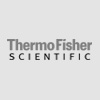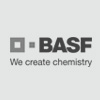Rabbit Monoclonal Antibodies
The TP-3 rabbit myeloma is a patented fusion partner. The patent is reprinted below so you can read about how it is done. The key, of course, is the development of the rabbit myeloma cell line.
A novel approach was taken by K. Knight and colleagues (Spieker-Polet et al., Proc. Natl. Acad. Sci. 1995 92:9348-52), who succeeded in producing a myeloma-like tumor in transgenic rabbits expressing oncogenes under the control of theimmunoglobulin heavy and light chain enhancers. They isolated a plasmacytoma cell line, termed 240E-1, from these tumors, and showed that fusions of 240E-1 cells with rabbit lymphocytes produced hybridomas. Hybridomas were produced from lymphocytes ofrabbits immunized using plasma proteins or whole cells, and were shown to secrete IgG antibodies.
An improved fusion partner cell line for the production of monoclonal antibodies from rabbits is provided.
References of interest include Spieker-Polet et al., Proc. Natl. Acad. Sci. 1995 92:9348-52; Rief et al., Hybridoma 1998 17:389-394; Liguori et al., 2001 Hybridoma 2001 20:189-98 and U.S. Pat. No. 5,675,063.
The invention provides a rabbit-derived immortal B-lymphocyte capable of fusion with a rabbit splenocyte to produce a hybrid cell that produces an antibody. The immortal B-lymphocyte does not detectably express endogenous immunoglobulin heavychain and may contain, in certain embodiments, an altered immunoglobulin heavy chain-encoding gene. A hybridoma resulting from fusion between the subject immortal B-lymphocyte and a rabbit antibody-producing cell is provided, as is a method of usingthat hybridoma to produce an antibody. The subject invention finds use in a variety of different diagnostic, therapeutic and research applications.
The terms "antibody" and "immunoglobulin" are used interchangeably herein. These terms are well understood by those in the field, and refer to a protein consisting of one or more polypeptides that specifically binds an antigen. One form ofantibody constitutes the basic structural unit of an antibody. This form is a tetramer and consists of two identical pairs of antibody chains, each pair having one light and one heavy chain. In each pair, the light and heavy chain variable regions aretogether responsible for binding to an antigen, and the constant regions are responsible for the antibody effector functions.
The recognized immunoglobulin polypeptides include the kappa and lambda light chains and the alpha, gamma (IgG1, IgG2, IgG3, IgG4), delta, epsilon and mu heavy chains or equivalents in other species. Full-lengthimmunoglobulin "light chains" (of about 25 kDa or about 214 amino acids) comprise a variable region of about 110 amino acids at the NH2-terminus and a kappa or lambda constant region at the COOH-terminus. Full-length immunoglobulin "heavy chains"(of about 50 kDa or about 446 amino acids), similarly comprise a variable region (of about 116 amino acids) and one of the aforementioned heavy chain constant regions, e.g., gamma (of about 330 amino acids).
The terms "antibodies" and "immunoglobulin" include antibodies or immunoglobulins of any isotype, fragments of antibodies which retain specific binding to antigen, including, but not limited to, Fab, Fv, scFv, and Fd fragments, chimericantibodies, humanized antibodies, single-chain antibodies, and fusion proteins comprising an antigen-binding portion of an antibody and a non-antibody protein. The antibodies may be detectably labeled, e.g., with a radioisotope, an enzyme whichgenerates a detectable product, a fluorescent protein, and the like. The antibodies may be further conjugated to other moieties, such as members of specific binding pairs, e.g., biotin (member of biotin-avidin specific binding pair), and the like. Theantibodies may also be bound to a solid support, including, but not limited to, polystyrene plates or beads, and the like. Also encompassed by the terms are Fab', Fv, F(ab')2, and or other antibody fragments that retain specific binding to antigen.
Antibodies may exist in a variety of other forms including, for example, Fv, Fab, and (Fab')2, as well as bi-functional (i.e. bi-specific) hybrid antibodies (e.g., Lanzavecchia et al., Eur. J. Immunol. 17, 105 (1987)) and in single chains(e.g., Huston et al., Proc. Natl. Acad. Sci. U.S.A., 85, 5879-5883 (1988); Bird et al., Science, 242, 423-426 (1988); see Hood et al., Immunology", Benjamin, N.Y., 2nd ed. (1984), and Hunkapiller and Hood, Nature, 323, 15-16 (1986)).
For more see http://www.google.com/patents/about?id=YQ05AAAAEBAJ&dq=5675063
















